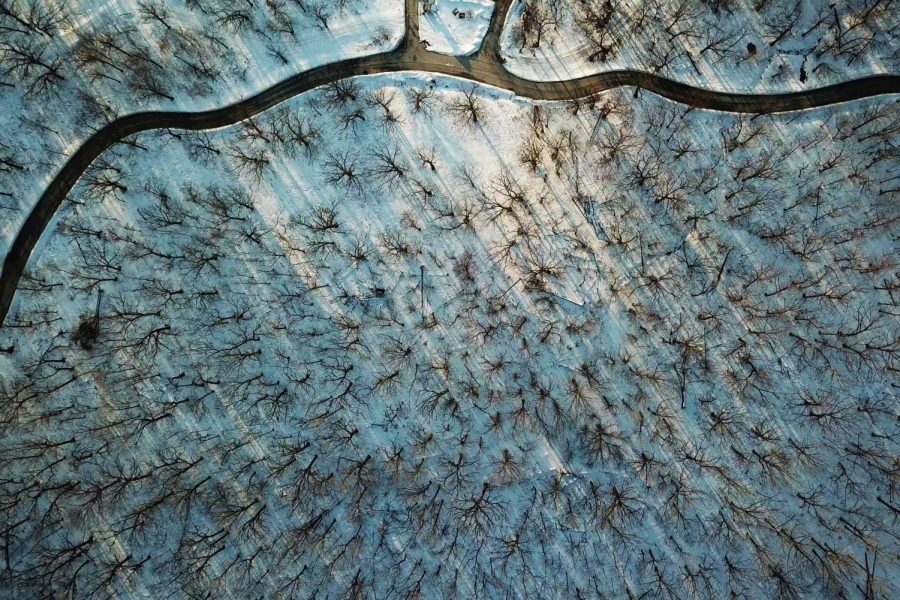State parks and forest preserves: the past, present and future of conservation
On March 1, 1872, Congress passed an act that established Yellowstone National Park as a “public park … for the benefit and enjoyment of the people.” Since then, the national park system has grown to include thousands of locations in an effort to “conserve the scenery and the natural and historic objects and the wild life therein and to provide for the enjoyment of the same in such manner … [and] leave them unimpaired for the enjoyment of future generations,” as described in the Organic Act of 1916 that created the National Park Service (NPS).
While state parks and forest preserves aren’t regulated directly by the NPS, their purposes align with those of national parks. The main difference between the two is that state parks are managed by the government at the state level. Forest preserves are managed even more locally, at the county level of government.
Forest preserves in Lake County began in 1957. According to the Lake County Forest Preserve District (LCFPD) website, the LCFPD was founded in a referendum started by homemaker Ethel Untermyer and her son Frank. In 1961, the first preserve in Lake County, Van Patten Woods, was created.
Similar to the Organic Act, the mission statement of the LCFPD notes that their purpose is “to preserve a dynamic and unique system of natural and cultural resources, and to develop innovative educational, recreational and cultural opportunities of regional value, while exercising environmental and fiscal responsibility.”
Jennifer Clark, a member of the Lake County Board that presides over all county government departments, said that the board is redoubling its efforts to preserve the indigenous wildlife of Lake County through programs like “Healthy Hedges.” This encourages people to replace invasive species of hedges in their yards with plants that are healthier for the soil.
The board is also carrying out multiple efforts to recover dwindling or endangered species, such as the smooth green snake and the Blanding’s turtle. This is accomplished by tracking females of the species and bringing them in when they are nearing the end of their pregnancies, Clark said. Once their offspring are born, they are raised in sanctuaries until they are strong enough to survive in the wild, and they are then released. This process continues until there is enough of a population of the species in the wild that they will continue to grow stably and out of endangerment.
An additional effect of the board’s efforts to preserve land is the reduction of flooding. As Clark said in an email, “Much forest preserve land serves as a reservoir for flood waters during rain events and during season flooding. Wetlands, open lands and land with native plants and trees are essential for absorbing extra water.”
On the board’s management of the preserves and trails, Clark stated, “We try to use the very best environmental practices possible… we really hire people that are educated in proper land conservation and management.”
Here’s a look at four forest preserves and state parks that are near Libertyville.
Independence Grove
Independence Grove Forest Preserve is a 115-acre forest preserve that includes a beach on a man-made lake, playgrounds and trails that wind around its perimeter. According to the LCFPD website, “surrounding prairie and woodlands provide a picturesque backdrop for hiking, biking, picnicking, and other fun activities.” There is also a dog park located on Milwaukee Avenue that is part of the preserve.
Independence Grove used to be a gravel quarry, as explained by the LCFPD website. The preserve was opened to the public in 2001 after a community advisory committee developed the blueprint for what the defunct quarry would become in the 1990s.
About 6.25 miles of trails run through the forest preserve. These include a gravel trail, a paved trail and trails that are a combination of both. The Des Plaines River Trail also runs through Independence Grove. While visitors can swim at the beach, the marina there also rents fishing boats, canoes, kayaks, paddleboards and pedal boats for use on the lake.
A survey was sent to students asking about which state parks and forest preserves they frequented and what they did there. About 54 percent of the 120 students who responded to the survey reported going to Independence Grove at least once every few months.
Some popular activities that students documented were picnicking, bike riding, kayaking, canoeing, hanging out with friends and running. Braeden Long, a junior, said that he likes to hang out with his friends and family at Independence Grove.
He also occasionally goes canoeing when the weather is warm enough to allow it: “During the summer, when my friends have their cars, there’s so much possibility…we’d go kayaking, canoeing; anything outdoors, I really enjoy.”
Old School Forest Preserve
Old School Forest Preserve is one of Lake County’s most popular sites, according to its description on the LCFPD web page. It contains 6.4 total miles of trails, consisting of both gravel and paved trails. Like Independence Grove, the Des Plaines River Trail runs through Old School. Dogs are allowed in Old School, unlike Independence Grove, as long as they are kept on leashes and on the trails.
Long also canoes at Old School as well as in the nearby Des Plaines River. “Just being in the presence of nature makes me happy,” he said. “It’s a euphoric feeling being a part of a working ecosystem.”
Sophomore Chad Matulenko said in an email that he often goes to Independence Grove and Old School in the summer, once or twice per week. He goes “mainly for biking, both for exercise and enjoyment.”
Eleven percent of respondents claimed to go to Old School on the survey, but given the small sample size, it’s possible that more students frequent this preserve.
Some of the most popular activities for students to do at Old School are bike riding and running along their trails, sledding in the winter, hanging out with their friends, kayaking, canoeing, bass fishing in the lake and having picnics in their “secluded picnic spots in the heart of Lake County,” per the description of Old School on the LCFPD website.
The land that became Old School Forest Preserve was acquired by Lake County in parcels from 1974 to 1976.
Old School was designed to resemble what Lake County looked like before it was completely settled. Large oak trees and indigenous flowers plot the land, and the parking lots that do exist there are kept small and secluded among trees in order to maintain this natural scene.
Illinois Beach State Park
Illinois Beach State Park, officially known as Adeline Jay Geo-Karis Illinois Beach State Park, stretches 6.5 miles along the coast of Lake Michigan and “offers a full range of recreation opportunities at one of the most unique and beautiful natural settings in America,” per the Illinois Department of Natural Resources website. The park spans 4,160 acres — split into northern and southern units — and more than 650 species of plants have been recorded inside. The park is located in Zion, about 30 minutes from Libertyville.
The DNR website describes the park as having “ample opportunities for swimming, boating, picnicking, hiking, fishing, camping and simply appreciating nature.” There is also a resort there available for visitors to stay at.
On September 21st, senior Emma Chandler and her AP Biology class went on a field trip to Illinois Beach State Park to collect data points, such as levels of sunlight and soil samples, at different parts of the beach. Though she described the trip as “a little bit stressful” because the students needed to gather accurate data in a “short amount of time,” she noted that they had “a little bit of time at the end to walk along the beach and chat a little bit.”
Volo Bog
Volo Bog, formally named Volo Bog State Natural Area, is the only quaking bog in Illinois, which means that the bog “quakes” or shakes when walked on due to its forming over water and soft mud. As described by the DNR website, it is a place to go for a “truly unique outdoor adventure.” The National Geographic website defines a bog as a “wetland of soft, spongy ground consisting mainly of partially decayed plant matter.” A mat of sphagnum moss, or “peat moss,” floats on top of the water, and cattails and sedges surround the bog.
Per the history provided by the DNR online, citizens of the area around the bog rallied together to raise funds to purchase the bog in 1958 and granted the deed to the University of Illinois. In the 1960s, they advocated again to have the bog protected from proposed development and to have it transferred to the Illinois Department of Natural Resources, which was known as the Department of Conservation at the time.
Volo Bog was declared an Illinois Nature Preserve in 1970, and three years later, it was registered as a National Natural Landmark. More than 1,100 additional acres of land have been purchased since then to “protect and enlarge the state preserve, which now includes marshes, prairie restoration areas, woodlands, two other bogs, and scenic trails.”
Bridges allow visitors to walk across the bog and view the wildlife that lives there, such as the sandhill crane. There is also a visitor center that houses a program room, a shop, a hands-on discovery area and a library. Furthermore, there is a picnic area available outside, but ground fires are strictly prohibited on the grounds.
The AP Biology classes also went to Volo Bog on their field trip. Chandler said that the group went on a tour of the bog and explored an exhibit at the visitor center that detailed what the bog was. She described the trip to Volo Bog as being “pretty relaxing.”









